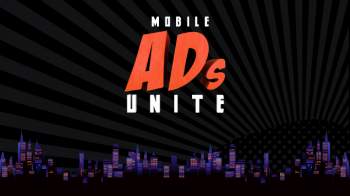The perpetual cycle of hardware, telcos and mobile advertising
Alexander Ayres
Alexander Ayres, Sales Manager at Weve, takes a look at the role of telcos in the on-going cycle of influence between hardware and mobile advertising.
2003 was my first smartphone experience: the Nokia 6600. This was a simpler time where the world was inhabited by Symbians (while that may sound like an alien, this was the name of the first smartphone OS); you could install all types of software for productivity and pleasure, boost memory with SD cards and search the web. Screens were measured with pixels not retinas, memory in megabytes and internet was run on WAP/GSM, not 4G or LTE. Fast forward to 2007 and Apple launches the iPhone in the UK, exclusively on the O2 network, and the smartphone was reborn.
How does this tie in to mobile advertising? The truth is, the mobile industry is fast becoming commoditised through unlimited calls and unlimited texts – it’s only a matter of time until someone comes out with unlimited data and then a race to the bottom ensues. So how do mobile businesses find new revenue streams, whilst innovating by building better networks and better handsets? With the iPhone7 announced earlier on in the week after much speculation on what great new features it would possess versus other new handsets, I feel it is key to look at how features can impact advertising.
Take verification: all new flagship devices have Touch ID/fingerprint readers, allowing handsets to biometrically verify users for transactions and data access, but this tech can be purposed to look at the verification of users and potential measurement of frequency. Beyond that, we have the new Samsung Note7, reportedly the best handset made thus far with an inbuilt iris scanner. Could this make viewability a thing of the past? (That is, unless anyone has read Angels and Demons and recalls the scene where someone’s eyeball is forcibly removed and used for iris recognition).
But should we even be talking about viewability? Or should we be talking about touchability? The implementation of 3D/force touch means we need to stop seeing the screen as a two-dimensional playing field. Users will now be able to touch beyond the banner or interstitial; will the force of the click on the “X” be able to measure how much they hate the new diaper brand interstitial covering up Football365’s transfer deadline article? It’s not just the screens that are 3D though, the iPhone7 has a dual camera, opening up the ability for users to take 3D photos and generate organic 3D content on Snapchat. But how does this impact creative?
For those who want to be ahead in a year or two years’ time, we need to consider these factors. However, this new tech comes at a price: phones are getting big, seriously big. If we carry on at this rate, humans will need to develop a pouch somewhat akin to that of a kangaroo to house their cellular extensions. Expanding form factor breeds fragmentation, in turn impacting the advertising industry. How can we be daring with creative when it won’t function on 90% of available inventory? As time moves on, features increasingly become standard across the mobile spectrum, enabling more and more reach using the likes of gyroscopic features (take Weve’s recent campaign for Sky Movies, for example) and rich camera experiences. We have Chinese manufacturers entering the market, such as ZTE, making phones as powerful as any flagship phone with gyroscopes, 13MP cameras, fingerprint readers and 4G/LTE for just $99, so there truly is no excuse for us to hold back on these touch points creatively.
Mobile is now powering other devices that we need to start considering, including wearables and bots. Can we measure emotion in engagement through these devices too? Nearly all smartwatches contain a heart rate monitor: can we put this to good use (aside from the gym) and see if there is any increase in heart rate with certain creatives or formats, making sure we are engaging with users’ susceptibilities emotionally?
Similarly, we could tap into to how we communicate with our devices, including the way we speak to our mobile assistants like Siri and Cortana, to tailor copy and allow advertising to be conversational with each user – after all, it has been suggested that chat bots will be the new search. Can we take that approach and project it in a proactive manner for advertising purposes?
Have no misconceptions that the mobile will power the next generation of tech through IOT and beyond. The way these devices establish M2M connections though will be the defining factor as to how that change is fuelled, dependent on investment of telcos in the 5G space, with 5G full roll out predicted within the next few years. To put into perspective the enormity of this tech for advertising, you can using you download an album in a few seconds on 4G (94Mbps), but in just a second on 5G (10.00Gbps) you would be able to download a whole series of HD content. Viewability issues around load times will be a thing of the past and streaming HD content will be without any buffering. Where it really starts to get interesting is looking at the merging of emerging technologies with augmented reality and virtual reality, potentially pushing up to a terabyte of data to a handset in under two minutes; VR becomes accessible in HD streams not only to showcase a 3D environment but to augment the real world in real time. Plus, from a data management perspective, 5G promises to be more interactive, drastically increase location precision and further inform user profile data.
So, what does the future hold? In this murky world of moving parts, the one remaining constant and the oil to this machine will be the telco, while the data these new touch points create will be captured and transferred using the network itself. No matter how people are using their handsets, the way their actions will be enabled will be through the telcos’ 5G data channels which will allow them to access those streams, and so developments in this space will be crucial to developments in the capabilities of hardware and mobile advertising.
Related content
Consumer control and “common sense” key to tackling mobile ad blocking: IAB UK study
Learn moreUnderstanding IDFA changes: 5 things to know
Learn moreEngaging users in the new age of mobile advertising
Learn moreApple becomes first $1 trillion dollar company
Learn more
Fast forward to 2030 with Futurescape
An in-depth exploration of the attitudes, innovations and media shifts that will shape the years ahead and redefine how we advertise by the turn of the decade



